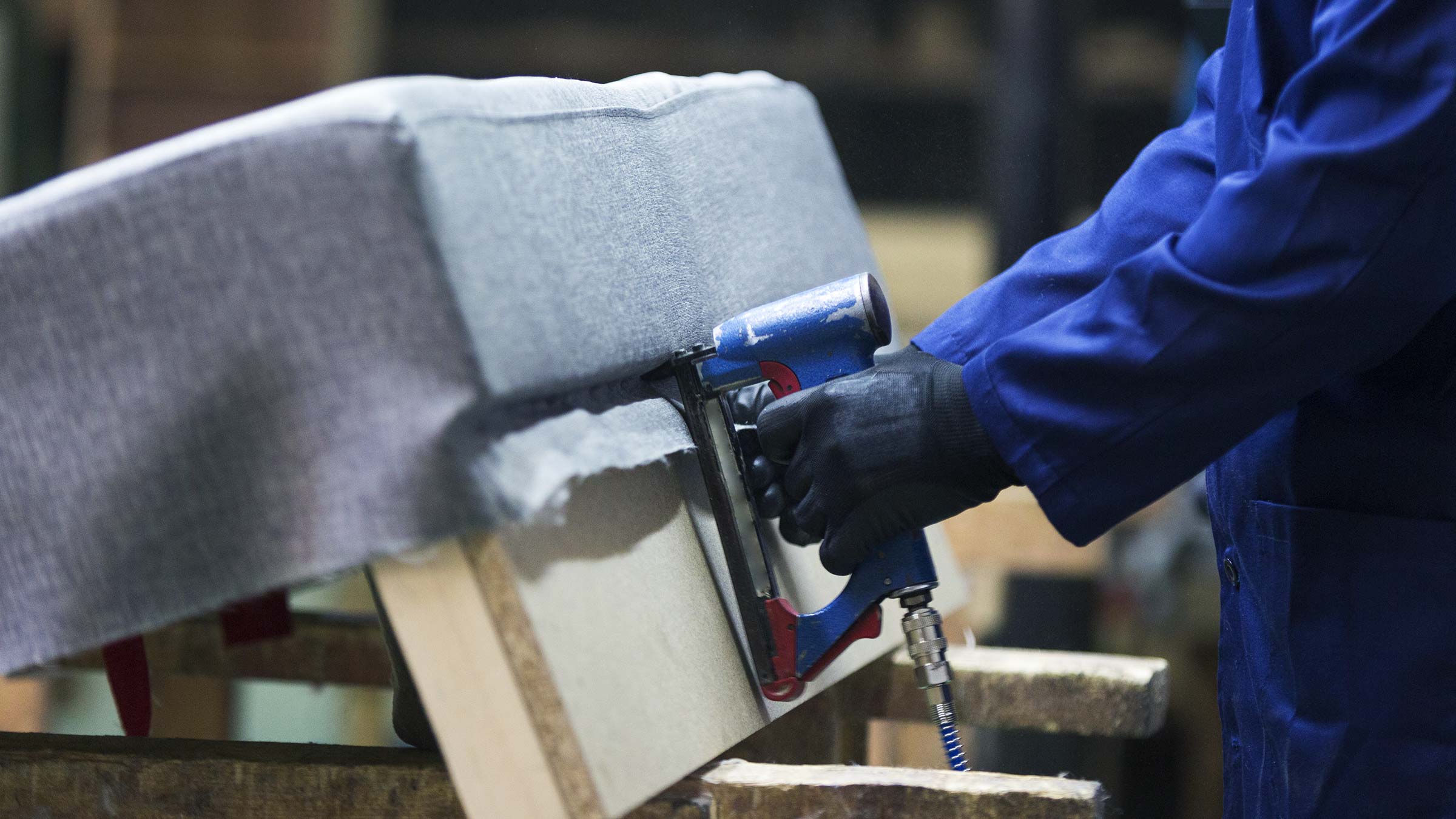Going back several decades, many retailers across apparel, food, footwear, health, beauty and home owned their own production facilities. In many cases, manufacturing prowess preceded retail stores: shops were simply the route to market. The real capability in these organisations, and the source of their competitive advantage, lay in manufacturing excellence. In short, customers loved their product, and loved knowing their goods were ‘Made in Britain’.
While those days of interlinkages between manufacturing and retail in many ways seem of a different era, in a post Covid-19 world – with increased barriers to global trade – we are seeing many modern retail businesses invest significantly in a vertically integrated supply model. But why, and why now?
Across all sub-sectors of retail, over the last decade we have seen the retailers with vertically integrated supply chains very often emerge as the winners. In grocery, for example, Morrisons is the only major grocer to produce more than 25% of its products sold in-store – and it remains the fastest-growing of the ‘big four’ supermarkets. Likewise, in home furnishings, The DFS Group, which produces 100% of its DFS-branded sofas in its own factories in Derby and Doncaster, has become the clear market leader in upholstery. In kitchens, Howdens, with its own expansive manufacturing facilities in Yorkshire, has seen its share price grow 63% over the last five years – despite a number of new entrants into the sector.

What is it about vertical integration that plays such an important role in enabling these companies to win? While conventional wisdom might say that owning manufacturing is more trouble than it’s worth, and that outsourcing manufacturing to third parties is more efficient, vertical integration in fact offers a whole host of competitive advantages allowing retailers to get ahead.
Firstly, vertical integration gives businesses a firm hold on their end-to-end supply chain – which is critical during uncertain times. During the early days of the Covid-19 crisis, the shortfalls of not owning, and in some cases not knowing, your supply chain were revealed as many businesses struggled to source the necessary products they needed when faced with a sudden spike in demand during the panic-buying phase. At the very height of the panic-buying crisis, for example, FMCG giant PZ Cussons reported difficulties sourcing the raw materials for soap from its overseas suppliers – arguably its most important product at that time. Similarly, disruption in China at the outset of Covid-19 led to a global shortage of zips and fasteners: the country’s largest firm, SBS Zippers, with plants throughout Wuhan Province, produces 80 million zips and 1.4 billion sliders monthly. Across the world, handbag and garment manufacturers were unable to continue production because of a reliance on Chinese manufacturing. Similar problems have emerged in recent months post-Brexit, with containers from Asia being more expensive and less reliable than ever. Suddenly, in many cases, the cost saving of outsourcing production to lower-cost countries looks penny wise, pound poor: opaque and dispersed global supply networks, in many cases, have failed.
Secondly, greater control over your supply chain means increased nimbleness. Now more than ever, the winning businesses are those that can pivot with ease, reimagining their offering to cater to fast-changing consumer behaviour. Vertical integration can increase the speed of new product development, allow retailers to adapt pack size or flavours to meet consumer demand and control the availability of certain products. As Adam Dury, Chief Commercial Officer of Card Factory, which has its own card manufacturing facilities, commented when I caught up with him, “with external manufacturers, there’s probably a four-month timeline with sensible business planning. But for us, we could design a card today and have it on our website in a number of days.” Card Factory’s company-owned Baildon manufacturing site produces hundreds of millions of cards every year, combining the nimbleness of vertical integration with the speed and efficiency of automation. “Print Craft [their printing works] is such a valuable asset to have, allowing us to be far more slick in our operations,” Adam explained.

I asked Adam whether forging a deep, long-term partnership with a supplier can have the same effect? “It might do,” he considered, “but vertical integration allows you to be much more flexible, because ultimately you own the factory, and it is only supporting one core business. You can have conversations internally, flip production, and discuss taking a hit on costs in one place to see benefit in another.”
“Vertical integration allows you to be much more flexible. You can have conversations internally, flip production, and discuss taking a hit on costs in one place to see benefit in another.” – Adam Dury, Chief Commercial Officer at Card Factory
Thirdly, vertical integration also taps into a burgeoning consumer desire for UK-sourced product, with lower carbon footprints. In the UK today, more and more retailers are putting 100% British product at the forefront of their offering. In 2020, Burberry opened its Centre for Manufacturing Excellence at its Castleford production site in Yorkshire, with the aim to invest in British manufacturing and nurture UK talent. This manufacturing centre will enable Burberry to once again produce its iconic trench coat in the UK – and to ensure that product can be personalised quickly and easily through its digital channels.
In the grocery world, Morrisons is the best example of this. The grocer’s company-owned manufacturing operations employ around 9,000 people at 19 sites across Britain. Morrisons even recently became the first British supermarket to own its own fishing boat. This strategy has given Morrisons a point of differentiation in an increasingly crowded market – and, arguably, a significant advantage on margin. Following Brexit, focusing on British produce may not only appeal from a customer standpoint, but also be the most practical strategy logistically.

Vertical integration doesn’t require a one-size-fits-all approach: a hybrid approach may yield the best proposition, and the best end price. As Adam commented: “one of the things we’re very conscious of is bringing manufacturing back to the UK in line with how customer behaviour is changing. In our world, hand-crafted cards are very valuable – but hand-crafted finishes don’t lean naturally to a UK labour model. So it’s about getting that right balance and curating the offering.”
Fourthly, alongside the practical benefits of knowing your supply chain in a crisis, a transparent supply network has become a central element to running an ethical and sustainable business. Today, consumers and investors alike are becoming increasingly attuned to a business’ operations behind-the-scenes. Retailers should expect scrutiny into their chains from an environmental, animal welfare and ethical perspective. One only has to think back to last year’s scandal at Boohoo to recognise the reputational damage at stake. Switching to a more vertically integrated model could act as a step towards becoming a more purpose-driven and stakeholder-focused organisation. Last week, for example, Morrisons committed to being the first supermarket completely supplied by net-zero carbon British farms by 2030 – five years ahead of the market. Moreover, committing to supply chain visibility will allow multinational brands and large retailers to better compete with challenger brands at which supply chain transparency is a USP.
In many cases, a major benefit of vertical integration is also a significantly different margin structure. By cutting out all the ‘middle men’, with full visibility on all costs (including transport), businesses with vertical integration in their supply are well placed to not only offer end products to customers at the best price – but also to ensure they have industry-leading margins.
There are clearly many benefits to vertical integration. In today’s fast-moving consumer landscape, where product and customer must be front of mind, owning manufacturing operations could mean the difference between success and failure. As we move into what is hopefully the latter stages of Covid-19, many retailers will be undertaking wholesale reviews of their organisations – and we predict many will choose to invest, once again, in their own UK manufacturing. While vertical integration may be associated with retailers of the past, it may be time to bring it into the present.









